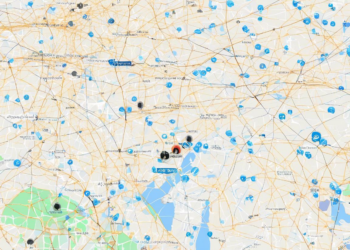The Ultimate Guide to Text Annotation AI: Tools and Techniques

Text annotation is a crucial process in natural language processing (NLP) and machine learning (ML). It involves labeling data with meaningful information, which helps train AI models to understand and interpret human language. With the rise of AI and its applications in various fields, text annotation is becoming increasingly important. In this comprehensive guide, we’ll explore the world of text annotation AI, covering its tools, techniques, and applications.
What is Text Annotation?
Text annotation is the process of adding labels or tags to text data to provide context and meaning. Think of it as adding metadata to your text, like highlighting keywords in a document or adding notes to a research paper. This metadata helps AI models learn the nuances of language and understand the relationships between words and concepts.
Why is Text Annotation Important for AI?
Text annotation plays a vital role in the development and training of AI models for various applications, including:
- Natural Language Understanding (NLU): Text annotation helps AI models understand the meaning and intent behind human language.
- Sentiment Analysis: By annotating text with sentiment labels (positive, negative, neutral), AI can analyze the emotional tone of text data.
- Machine Translation: Text annotation provides context and meaning for accurate translation between languages.
- Named Entity Recognition (NER): Annotating text with entities like names, locations, and organizations enables AI to identify and extract these entities from text.
- Text Summarization: Text annotation helps AI models understand the key points in a text and generate concise summaries.
- Chatbots and Virtual Assistants: Annotating chatbot conversations with intent and entities enables AI to respond accurately and effectively.
Types of Text Annotation Techniques
There are several popular text annotation techniques used in AI development:
- Named Entity Recognition (NER): Identifying and labeling entities like names, locations, organizations, and dates within a text.
- Sentiment Analysis: Assigning labels like positive, negative, or neutral to express the sentiment of a text.
- Part-of-Speech (POS) Tagging: Labeling words with their grammatical roles, such as nouns, verbs, adjectives, and adverbs.
- Chunking: Grouping words into meaningful phrases or chunks based on their grammatical function.
- Relation Extraction: Identifying and labeling relationships between entities in a text.
- Intent Classification: Classifying the user’s intent in a text, such as asking a question, making a request, or expressing an opinion.
- Text Classification: Categorizing text into predefined categories based on its content.
Text Annotation Tools: Your Essential AI Training Partners
Several text annotation tools are available to streamline the process and improve accuracy. These tools offer a range of features, from simple text highlighting to advanced annotation workflows.
- Prodigy: https://prodigy.works/ A popular open-source text annotation tool offering a flexible and customizable interface.
- Amazon Mechanical Turk (MTurk): https://www.mturk.com/ A crowdsourcing platform for human-based annotation tasks.
- Labelbox: https://labelbox.com/ A cloud-based annotation platform with features for text, image, and video annotation.
- Scale AI: https://scale.com/ A comprehensive platform for data annotation, including text, image, and point cloud data.
- Google Cloud AutoML Natural Language: https://cloud.google.com/natural-language/ Offers pre-trained models and tools for text annotation tasks.
Text Annotation Workflow: A Step-by-Step Guide
- Data Preparation: Start with a clean and well-organized dataset.
- Choose Annotation Technique: Select the appropriate annotation technique based on your AI model’s purpose.
- Define Annotation Guidelines: Create clear and concise guidelines for annotators to ensure consistency.
- Annotation Process: Use your chosen annotation tool to annotate the data.
- Quality Control: Review the annotated data for accuracy and consistency.
- Data Training: Use the annotated data to train your AI model.
The Importance of Data Quality in Text Annotation
The quality of your annotated data directly impacts the performance of your AI model. Inaccurate or inconsistent annotations can lead to biased and unreliable results. Therefore, it’s crucial to:
- Use Experienced Annotators: Employ annotators with expertise in the relevant domain.
- Implement Quality Control Measures: Regularly check the accuracy of annotations and provide feedback.
- Maintain Consistency: Ensure annotation guidelines are consistently followed throughout the process.
- Use Validation Techniques: Employ techniques like inter-annotator agreement to measure annotation quality.
Text Annotation in Action: Real-World Applications
Text annotation is used in various fields to improve AI models and their applications. Here are some real-world examples:
- Customer Service Chatbots: Text annotation helps train chatbots to understand customer inquiries and provide relevant responses.
- Medical Diagnosis: AI models trained on annotated medical records can assist doctors in diagnosing diseases and recommending treatments.
- Social Media Sentiment Analysis: By annotating social media posts with sentiment labels, AI can analyze public opinion and trends.
- Financial Risk Assessment: AI models trained on annotated financial documents can identify patterns and predict potential risks.
- Legal Discovery: Text annotation helps streamline the process of reviewing legal documents and extracting relevant information.
Future Trends in Text Annotation AI
The field of text annotation AI is constantly evolving. Here are some emerging trends to watch:
- Automated Annotation: AI-powered tools are being developed to automate parts of the annotation process, reducing human effort and improving efficiency.
- Active Learning: Combining human input with AI algorithms to identify the most important data points for annotation.
- Transfer Learning: Using pre-trained AI models for text annotation, allowing for faster and more accurate results.
- Multimodal Annotation: Combining text annotation with other modalities, such as image and video annotation, for a more comprehensive understanding of data.
Conclusion: Text Annotation is the Key to AI Success
Text annotation is an essential step in developing effective and reliable AI models. By providing AI with well-labeled data, we can unlock the full potential of natural language processing and machine learning. As AI technology continues to advance, text annotation will play an even more crucial role in shaping our future.
By understanding the different techniques, tools, and workflows involved in text annotation, you can equip yourself with the knowledge to create high-quality AI models that solve real-world problems. The ultimate guide to text annotation AI empowers you to harness the power of language data and unlock the possibilities of artificial intelligence.













